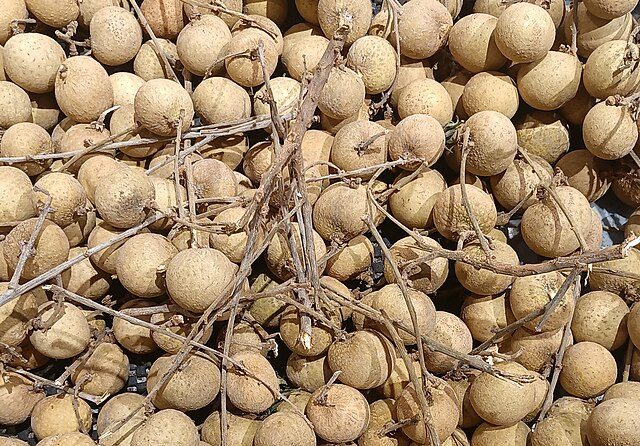Longan (dimocarpus longan) producers in Chom Thong district of Chiang Mai province in northern Thailand have attracted disaster help from Land Bank.
According to Thairath newspaper on October 24, 2025, deputy Prime Minister Sophon Sarun advised the banking agency to support farmers on land issues.
Land Bank first focused on land/disaster issues facing the district’s Ban Huay Muang Land Reform Community Enterprise Group.
The group consists 14 families that farm longans on 36 rai (14.04 acres) and their joint production mandate makes their land retention right paramount.
Disasters and Land Tenure in Chom Thong
Redressing land tenure weaknesses is paramount for commercial longan farmers who risk losing leased land from population pressure and rising land prices.
According to the Journal of Law & Society Review, land rates in the inclusive Chiang Mai province have risen since the Land Titling Project of 1986. This has put small-scale commercial crop growers on the brink.
Some smallholder longan growers use the lease-style Usufruct land title, where they only maintain ownership if longans sell well.
Prices sometimes collapse: in July 2025, they halved to a nearly 11-year low of 14 baht ($0.43) a kg.
The price kill owed to phenomenal longan- and durian-rich Chanthaburi province’s input. Production leader Chiang Mai province also saw its output rise 1.2 times year-on-year.
Regarding disasters, Chom Thong district has a flooding record, especially downstream the agrarian Mae Klang river.
The area is also associated with landslides, which as recently as on March 15, 2025 caused a road to give way with casualties.
This district is also prone to heavy rainfall and its sloping terrain adds the devastation scale of land tremors.
So, as producers of longan in northern Thailand receive help from Land Bank, titling and disaster issues remain tied to markets. The below statistics take the issue further with land utility details.
Statistics on Land Utility by Longan Producers in Northern Thailand
Thailand commands 70% of worldwide longan trade, with the main production source being the north of the country. The key province of Chiang Mai alone produces 40 to 50% of national output. The northern region as a whole harvests some 1 million tonnes of the annual national output of 1.4 million tonnes (2024). This centralization of production in one area makes efficient land utility important. Below is a review of land utility in the area under topical approaches
What is the acreage under longan in northern Thailand?
Northern provinces occupied 80% of the national longan cultivated area before 2005, per the Bangkok Research Center. After peaking to 140,000 hectares in 2009, the northern harvested area dipped to just over 130,000 hectares in 2017.
What is the average farm size in northern longan areas?
Northern Thailand has predominantly small family longan farms at below 10 rai (1.5 hectares). Only a few large-scale farmers command over 10 hectares apiece. This is unlike Chanthaburi province in the east of the country, whose typical longan farm area is 20 rai or 3 hectares.
